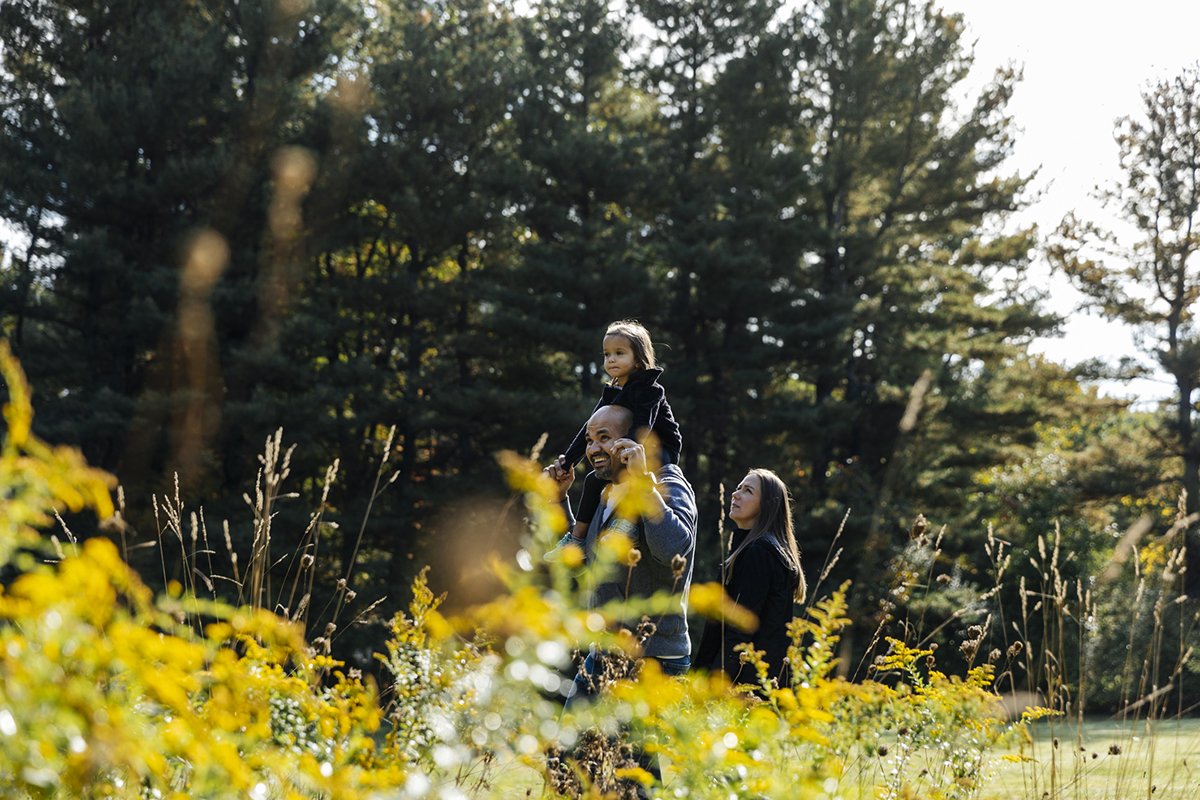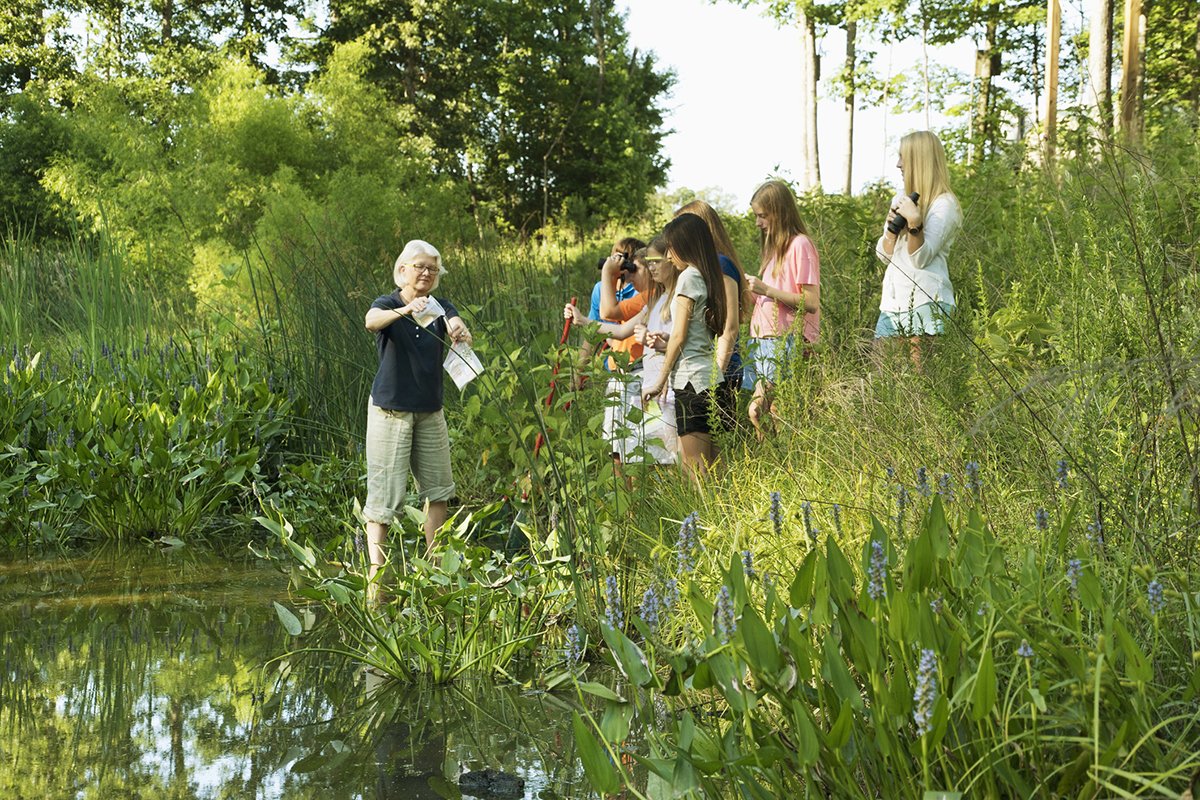When you think of a classroom, it’s easy to imagine four walls painted yellow, hard plastic chairs and overhead fluorescent lighting. The setup has been a standard for years, but what if it’s time for something more natural?
“I really believe children learn naturally, and they are at their best when learning in a nature-based environment,” says Christina Payne, an educator and owner of a Colorado nature-based preschool. “Children are naturally curious. And so when we put them outside, there are so many different things for them to explore every single day that just naturally happens following the child’s curiosity.”
Payne’s Little Pines Preschool in Fort Collins is part of a growing movement that immerses students in the outdoors, focusing on nature and using play at the front of education. The popular trend is tying itself to countless studies suggesting outside is better. Students spend the entire day outdoors, regardless of the weather, on unique campuses in the woods, near ponds and even on public lands.
The Growing Popularity of Getting Outside
There are now around 800 nature-based preschools in the U.S., according to Natural Start Alliance, a project within the North American Association of Environmental Education (NAAEE). The organization recently released a new survey reflecting the movement’s growth.
The data shows that nature-focused programs were essentially nonexistent before 2010. Since then, they have grown exponentially, increasing each year and getting a significant boost around the start of the pandemic.
“It’s really exciting to see the growth of this approach to early learning in the United States,” says Emily Van Laan, a communication specialist for Natural Start Alliance. “In terms of comparing the data that we collected in 2017 to 2022, you can see that nature preschools in 2022 are spending more time outside. We think that’s probably driven a little bit by the pandemic, with programs understanding that it was safer to operate outdoors.”
The survey says nearly a third of schools spend the entire day outside, while the remaining schools spend close to 70% of their day outdoors. The Natural Start Alliance website explains that educators use the natural world to teach children. While there is still a focus on the basics, the curriculum uses things like counting plants in a garden or singing songs on a hike to promote these ideas. Parents can expect the kids to come home caked in mud with art projects made from gathered sticks and leaves. Many schools keep environmental stewardship front and center.
“There’s a lot of misconception that kids can’t learn that way or this isn’t safe for children,” says Van Laan. “I think a big piece is just getting information out there of not only the statistics of how well children do learn but helping parents understand the validity of this option.”

Arguing for a Natural Education
The NAAEE is based in Washington, DC, where the organization and the Natural Start Alliance lobbies lawmakers for more access to these programs. Their work involves overcoming legal hurdles for educators and changing the general public’s minds about education standards.
“We know from a growing body of research, especially over the last decade, that nature is one of the best learning settings we can offer young children,” says Van Laan. “Not only are kids going to get a great academic education, but they’re also going to be laying the foundation for lifelong learning and an investment in our planet.”
There is a lot of evidence backing the benefits of simply being in nature, with a similar amount of data focused on learning. These studies include everything from best-selling books to white papers and Montessori educators. Must cite the creativity and individual learning that comes with outdoor education. Studies show time spent outdoors helps a child’s emotional resilience, with added benefits for ADHD and autism due to the calming effects of being in nature.
British adventurer Bear Grylls, who also serves as the United Kingdom’’s Chief Scout, is a firm believer in integrating the outdoors into an overall education. “To paraphrase Baden-Powell, who started the Scouts movement: a week in the field is worth a year in the classroom. He was right and the outdoors is always our best teacher as well as best healer.”
And there are foundation life skills to be developed from spending time learning outdoors. “It’s where we develop confidence and skills and quiet pride,” says Grylls. “It is where real courage and friendships can grow and it is where we can find space and time and quiet to let nature work her magic in our hearts.”
Outdoor educators say their classrooms allow children to thrive in new ways.
“Nature-based education is self-directed, whereas typical learning is more teacher-centric with a teacher crafting a learning experience,” says Payne about the approach at her school. “In a nature-based education experience, a child might show an interest in a flower which might lead to a counting game where we look to see how many of a specific flower we can find, or we might take out a measuring tape and measure the different parts of the flower.”
The growing number of these schools, combined with work by organizations like Natural Start Alliance, is starting to move nature-based education into the mainstream.
States like Colorado and Washington have recent laws supporting these new schools, while Maryland and other states are working towards pilot programs to license these schools. Places like Minnesota are showing support through grants, with clever titles like “No Child Left Inside.”
Room For Improvements Remain
Besides licensing, nature-based programs still have plenty of work to navigate. These roadblocks include parents worried about the weather. With schools from as far north as Fairbanks, AK, to the humid temperatures of Miami, FL, there’s plenty to account for.
“I would want to convey to parents that these programs are prepared to adapt to your child’s needs. No learning can happen when a child’s uncomfortable if they’re afraid of the weather or they’re too hot or too cold,” says Payne. “As an educator, it is my responsibility to be watching for signs that a child is uncomfortable and adjusting. We’re always going to adjust to the child who’s least comfortable.”
The lack of diversity is another topic that is top of mind and a focus of the Natural Start Alliance’s survey. Despite a growing number of schools, the demographics for nature-based education remain overwhelmingly white.
In the original 2017 survey, 82% of children were white, compared to the 2022 survey, which had white children at 78%. While this may look like a step in the right direction, the increase in diversity may have come from Natural Start rewording the question. The student percentages more or less reflect the makeup of nature-based educators.
“In order for this to change, we need to further explore why these discrepancies exist, which will require additional research,” says Van Laan. “In the meantime, we are focusing on policy changes that will direct more public funding to nature-based programs.”
Van Laan says a big focus of her organization is working to change the perception that this form of education is a luxury. The Natural Start Alliance argues that we need to remove this mindset to focus on the benefits of learning in nature.
Finding a Classroom

Natural Start Alliance has a growing map showing where these schools are based. Nearly every state has at least one program with an increased opportunity for more.
For now, this form of education is primarily available for preschool-aged children. Still, there is a growing movement to create elementary and higher levels of education with a similar standard.
“Parents who have enrolled their children in nature preschools and see how beneficial it is for them often report disappointment when they age out of the preschool program,” says Van Lann. “Today’s elementary schools have become more academically based rather than play-based. There has been a push for more nature-based programs, especially in those early years, the primary grades, kindergarten, first, second.”
With a 200% increase in these programs since 2017, there doesn’t appear to be many things slowing down the growth of a natural education. Parents and educators involved say they wouldn’t have it any other way.
“I think the resilience that naturally comes from learning outside is just tremendous because our kids are getting used to being uncomfortable, and life is not always comfortable,” says Payne. “So learning how to navigate that is the biggest bonus. How do I take care of myself in this environment?”
The post Nature Preschools: Is Putting an Emphasis on Outdoors Play The Key To Early Education? appeared first on Outdoors with Bear Grylls.